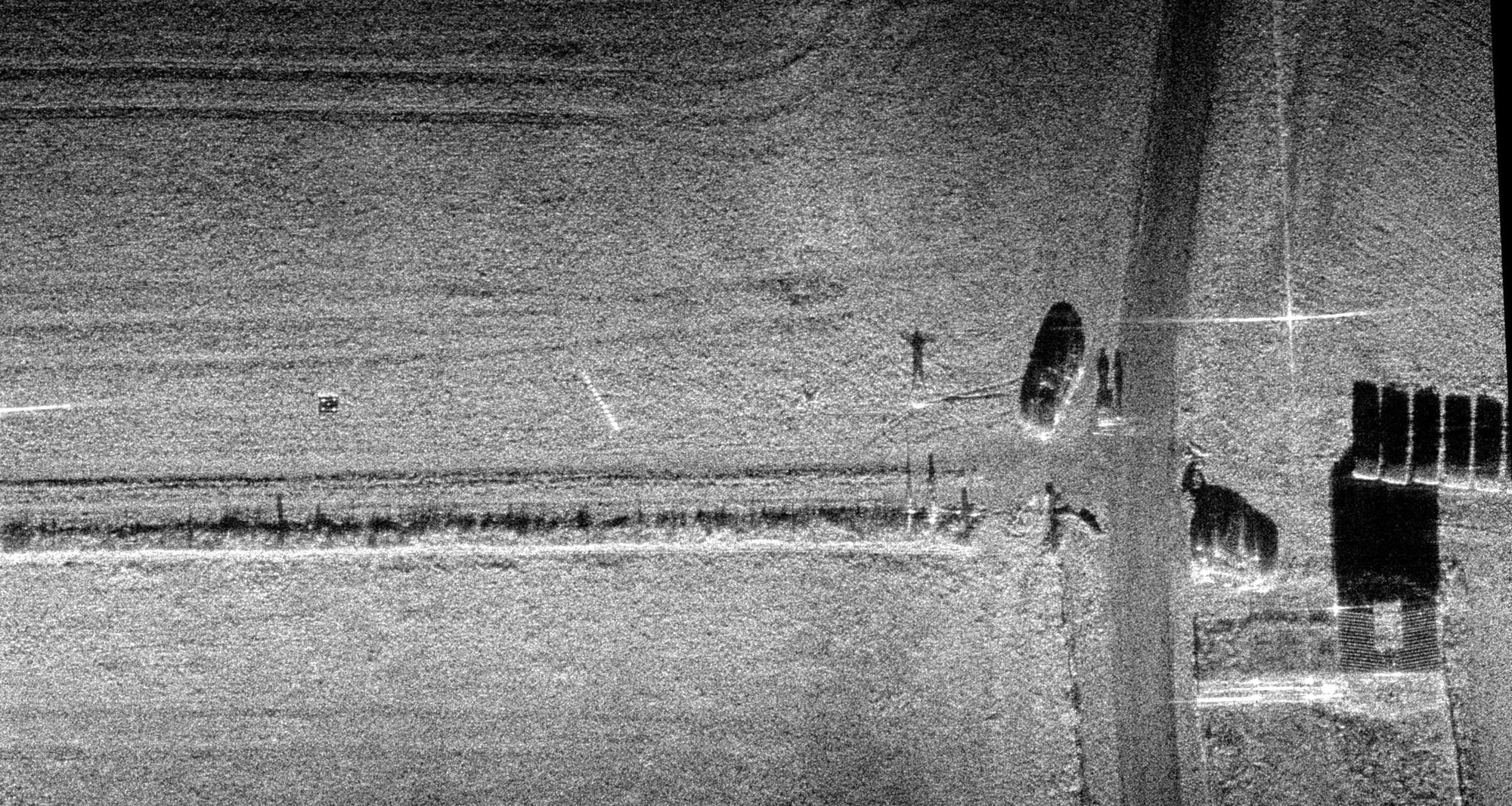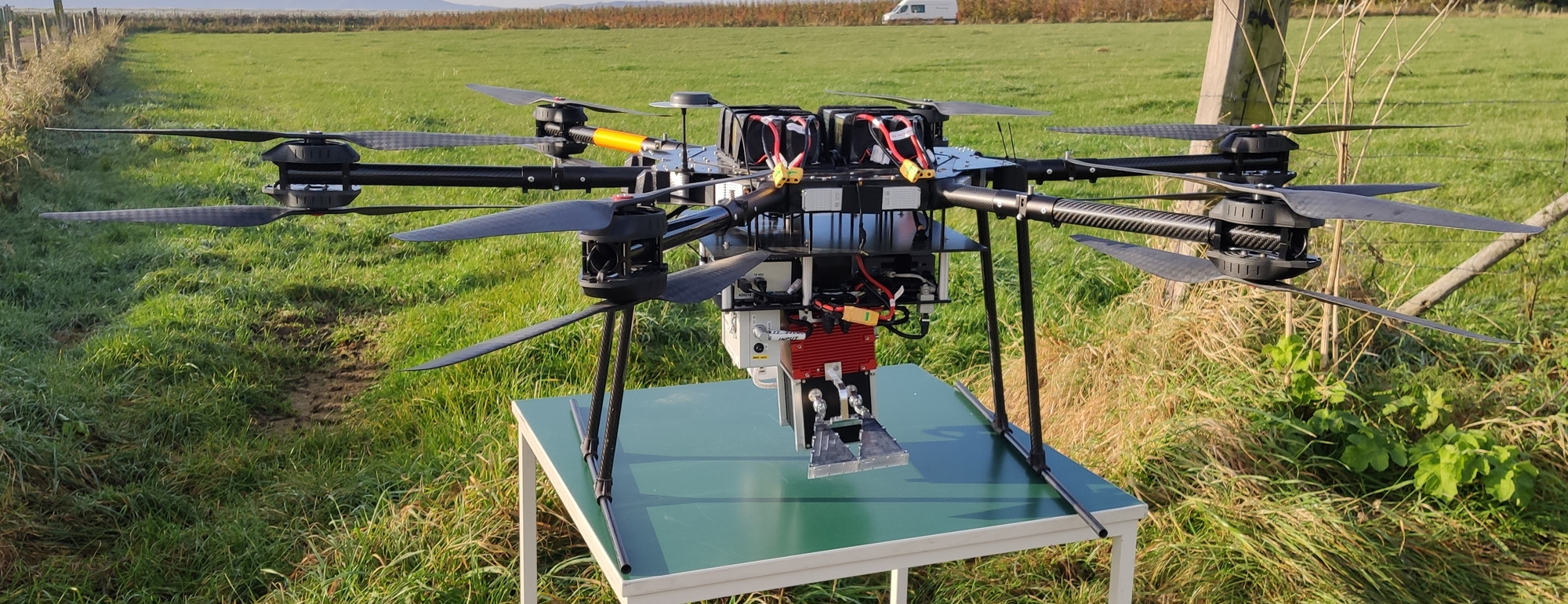Imaging radar: carried by a drone


A synthetic aperture radar (SAR) carried by a drone and adapted to its flight movements captured the first high-resolution images.
During disasters, it can be important for rescue workers to get a »quick« overview of the situation - preferably from a bird‘s eye view. Border guards and the military face similar issues. Drones are ideal for such reconnaissance. However, if they carry optical cameras, they have to rely on good weather: In fog, dense rain, smoke or darkness, they are hardly an asset. Radar devices, on the other hand, can see unhindered through fog and the like. The shortcoming is that high-frequency, high-performance radar units, whose resolution is close to that of optical devices, have been far too large and heavy for drones. They require larger carriers, such as ultralight aircraft.
94-gigahertz radar, nine kilograms light
Researchers at Fraunhofer FHR have now miniaturized such high-frequency SAR radars: The 94-gigahertz device developed weighs just nine kilograms, light enough for a drone. The research team had to adapt not only the hardware, but also the algorithms behind it. After all, a drone moves in a completely different way than an airplane: It flies tight, fast turns and circles, is influenced much more strongly by the wind - it wobbles and vibrates more strongly - and sometimes comes to a complete stop or even flies backward. If the miniaturized radar is to produce useful images, the flight path must be known to the millimeter. However, high-precision measurement sensors for determining the position are difficult to obtain and, at over 100,000 euros, extremely expensive. The researchers therefore tested more cost-effective MEMS sensor technology, short for Micro-Electro-Mechanical-System, which is already available for less than 20,000 euros. How is imaging changing? Which components provide sufficient output power despite high and broadband transmission frequency? The question of transmitting power could be solved in particular by components from Fraunhofer IAF in Freiburg.
Vehicle tracks in grass can be visualized
Initially, it was questionable whether such a drone-compatible system would be able to generate a focused image at all. The result is surprising: the resolution of the images, at around five centimeters, is only slightly worse than that recorded from an airplane, which comes in at up to two centimeters. At flight altitudes of 30 to 70 meters, the system was not only able to detect parked vehicles and people, but even visualize vehicle tracks in the grass. In a follow-up project, the radar‘s weight is to be reduced to less than seven kilograms, and it is also to process its data in real time and send it to the ground, where the images can be followed live via video stream.